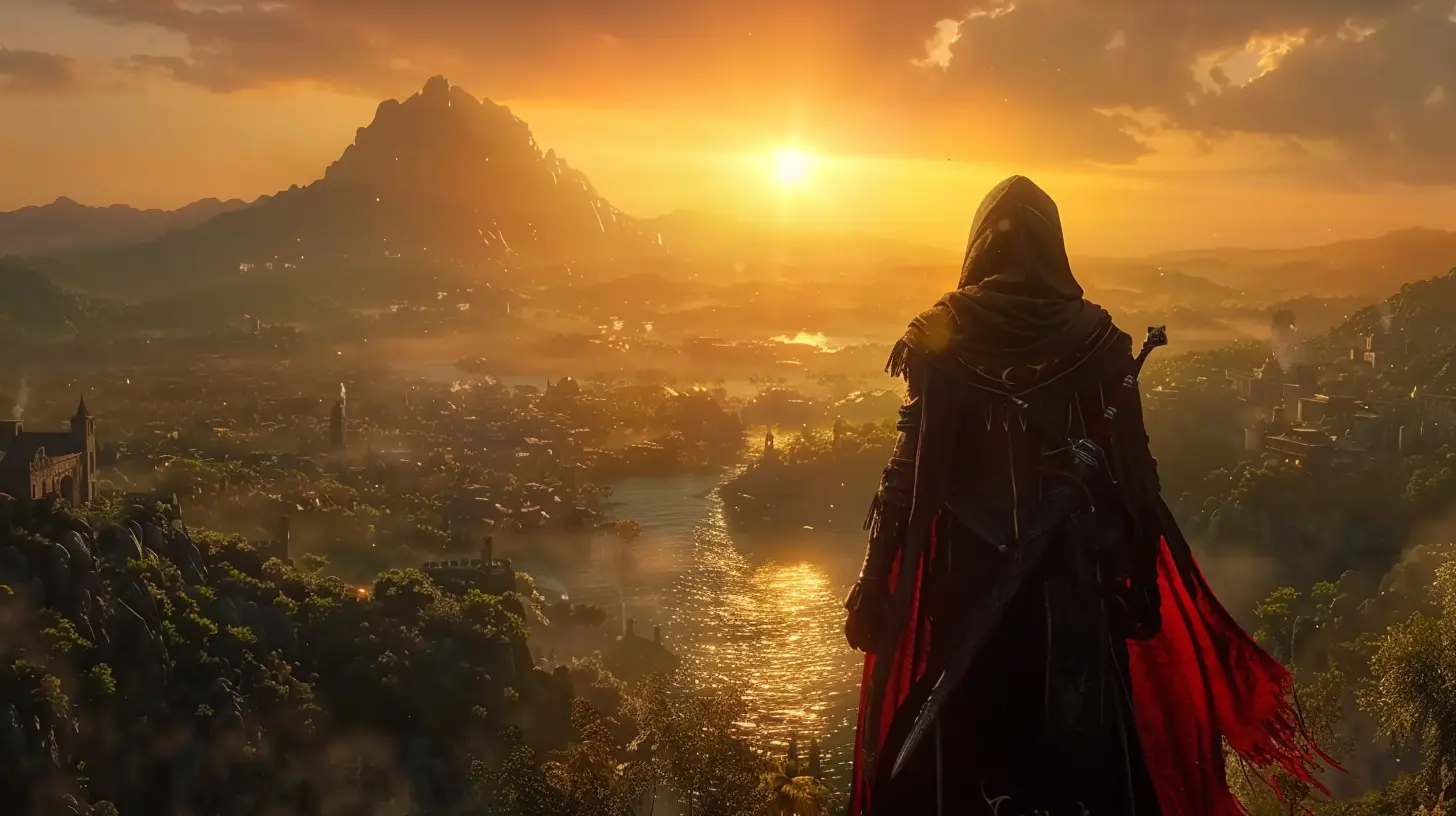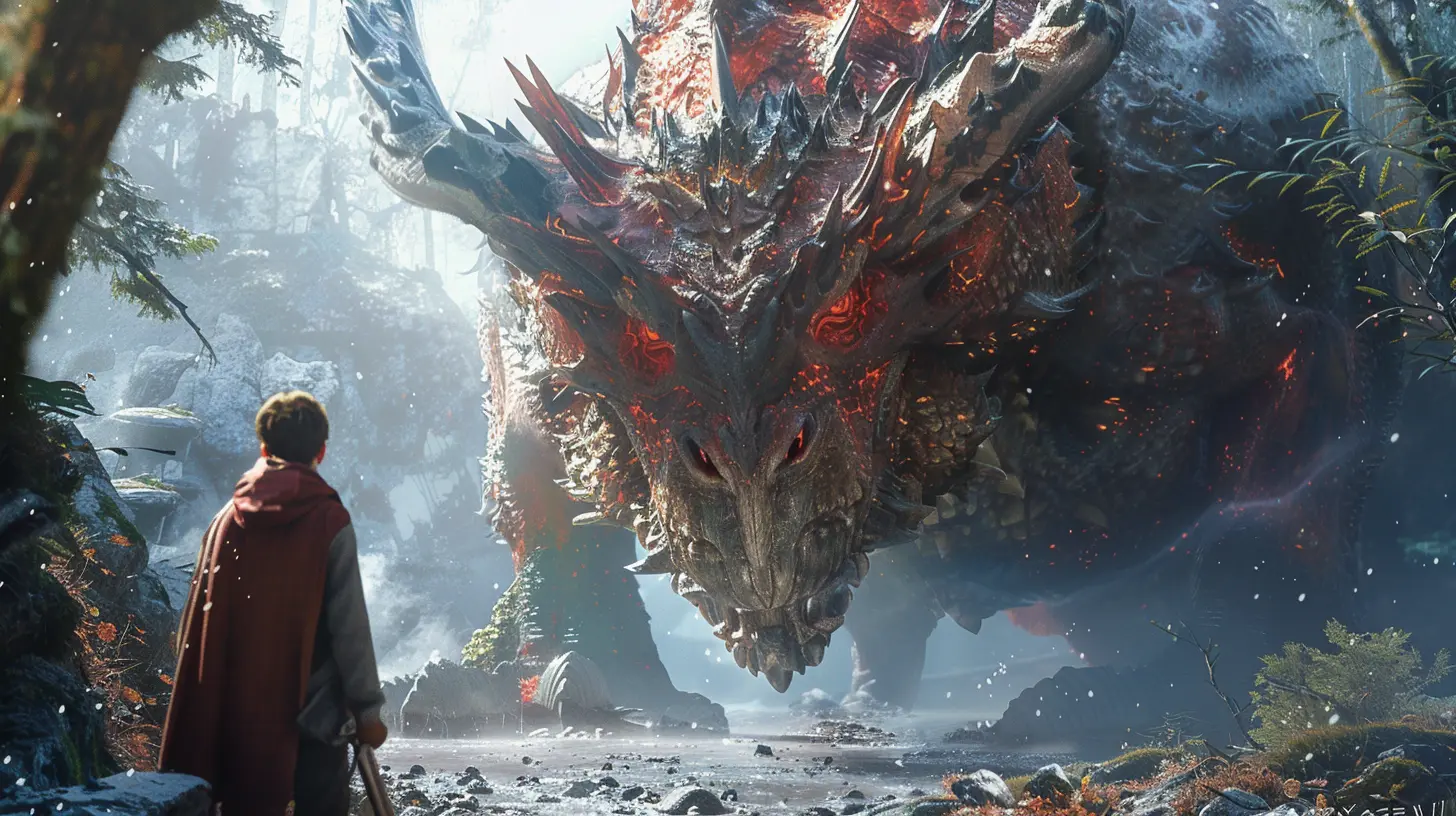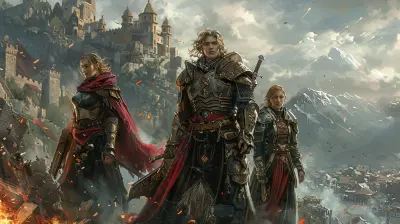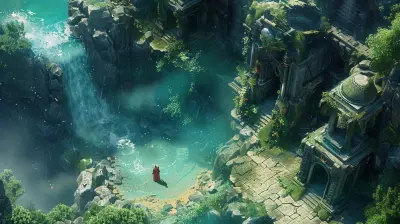How Downloadable Content Saves Single-Player Games
1 July 2025
Let’s be real—single-player games hold a special place in our hearts. They're immersive, emotional, and often allow us to experience stories like never before. But there’s a common problem. Once you’ve finished the main story or completed every side quest, the game sometimes starts collecting dust. It’s almost like finishing your favorite TV series—you’re left longing for more, but there’s nothing left to do. That’s where downloadable content (DLC) comes in, swooping down like a superhero to save the day (and your game).
DLC has become a game-changer for single-player adventures, keeping them fresh, relevant, and exciting long after their initial release. But how does it manage to do that? Let’s dive into the world of DLC and see how it breathes new life into these games.
What is Downloadable Content (DLC)?
Before we get ahead of ourselves, let’s break it down for those who might be scratching their heads. Downloadable Content, or DLC for short, refers to additional content creators release post-launch for a game. It can be anything from new storylines and characters to weapons, maps, or even cosmetic items. Think of it as a juicy dessert after a tasty main course—the extra bit you didn’t know you needed, but now you can’t live without.
The Decline of Single-Player Games: A Myth?
There’s been constant chatter about how single-player games are dying. But here’s the thing—they’re not. Yes, multiplayer games and live-service formats have taken the gaming world by storm, but single-player experiences still have a loyal fanbase. Titles like The Witcher 3, God of War, and Elden Ring are proof that players crave rich, narrative-driven experiences. The problem isn’t a lack of interest; it’s longevity.Unlike multiplayer games, where you can keep coming back for competitive matches or co-op missions, single-player games usually offer a “one-and-done” experience. You play, you finish, and then... you’re done. That’s not necessarily a bad thing, but it’s not sustainable when players nowadays want more bang for their buck.
How DLC Revitalizes Single-Player Games
So, how does DLC save single-player games from becoming yesterday’s news? Let’s break it down.1. Extending the Storyline
Ever felt like a game ended too soon, just when you were getting invested in the characters? DLC often steps in to continue—or even expand—the story. For example, The Witcher 3 had two massive DLC expansions: Hearts of Stone and Blood and Wine. These weren’t just minor updates; they were full-on adventures with new characters, locations, and story arcs.It’s like getting a sequel without having to wait five years for a new game. Players get closure, while developers get to keep the momentum going. Everyone wins here.
2. Adding New Gameplay Features
Sometimes DLC isn’t about the story—it’s about gameplay. Developers can introduce new mechanics, game modes, or challenges to keep the experience fresh. Take Hollow Knight: The Grimm Troupe, for instance. This DLC introduced new bosses, quests, and abilities. It didn’t just add to the game; it redefined how you played it.For players, it’s like unwrapping a surprise gift. You’re already familiar with the game, but the new features make you fall in love with it all over again.
3. Keeping the Player Base Engaged
Let’s face it: in the age of short attention spans, it’s difficult for a game to stay relevant for long. DLC gives players a reason to return. Imagine you’re scrolling through your game library and notice an old favorite has a brand-new DLC. You’re tempted to jump back in, right? Exactly.Releasing regular DLC acts as a gentle nudge, reminding players why they fell in love with the game in the first place. It’s a smart move, both from a business and a fan-service perspective.
4. Encouraging Replayability
You know that bittersweet feeling when you finish a game? You want to play it again but are worried it won’t hit the same. DLC can solve that problem. By adding new content, challenges, or even alternate endings, it gives players a reason to hit “New Game” all over again.Case in point: Mass Effect 2. The Lair of the Shadow Broker DLC added a gripping side story and additional missions that made replaying the game an absolute joy. For fans, it’s a no-brainer to dive back in.
5. Enhancing Immersion
Immersion is a big deal for single-player games. DLC often brings new zones to explore, items to collect, and characters to meet, enriching the world-building in ways that the base game couldn't. Expansions like Skyrim’s Dawnguard DLC introduced vampire factions and new lore that added an entirely new layer of depth to the game.It’s like finding out your favorite book has hidden chapters. You’re already invested, and the new content just pulls you deeper into the story.
The Business Side of DLC
Okay, let’s pivot for a second. We know how DLC benefits players, but what about developers? Creating a game is a massive undertaking, both in terms of time and money. DLC is a way to keep generating revenue from an existing game without having to start from scratch. In simple terms, it’s like renovating a house instead of building a new one—it takes less time, costs less money, and still delivers value.DLC also lets developers respond directly to player feedback. Players want more content? Done. They want a specific character to get their own storyline? Say no more. It’s a win-win situation.
What Makes Good DLC?
Not all DLC is created equal. Some feel like an afterthought or, worse, a cash grab (cough pay-to-win items cough). So, what separates the good from the bad?Here’s what players generally want from DLC:
- Substantial Content: Nobody wants to pay for a 10-minute side quest. Quality over quantity, sure, but there has to be enough content to justify the purchase.
- Seamless Integration: The DLC should feel like part of the game, not a tacked-on extra.
- Reasonable Pricing: Let’s be honest—nobody likes overpriced DLC. If it costs as much as the base game, it better be worth it.
The Future of Single-Player Games and DLC
As gaming evolves, so does DLC. Subscription models, live-service games, and seasonal content are all shaping the way we experience single-player titles. But one thing’s clear: DLC is here to stay. With games becoming bigger and more connected, we can expect even more innovative ways to expand on our favorite stories and worlds.Will it always be perfect? Probably not. But if done right, DLC has the potential to keep single-player games alive and thriving in a crowded gaming landscape.
Final Thoughts
Single-player games aren’t dying—they’re adapting. And DLC plays a huge role in that transformation. It adds depth, replayability, and a reason to revisit our favorite worlds. So, the next time you hear someone complain about the rise of DLC, just remind them: it’s not the villain; it’s the hero we didn’t know we needed.Sure, there will always be some bad apples, but when DLC is done right, it’s worth every penny. Whether it’s expanding the story, adding gameplay features, or simply keeping us entertained, DLC is what keeps single-player games feeling fresh long after the credits roll.
all images in this post were generated using AI tools
Category:
Downloadable ContentAuthor:

Francesca West
Discussion
rate this article
2 comments
Kylie McClendon
DLC breathes life into single-player experiences—thank you for this!
October 17, 2025 at 3:20 PM

Francesca West
Thank you for your feedback! I'm glad you find DLC enhances single-player experiences. It really can add new dimensions to gameplay!
Pearl Good
Downloadable content enhances single-player experiences by providing fresh narratives and gameplay, while balancing development costs and player engagement.
July 8, 2025 at 3:15 PM

Francesca West
Thank you for your insightful comment! I agree that downloadable content can significantly enrich single-player experiences by introducing new narratives and gameplay while also addressing development costs and maintaining player engagement.


